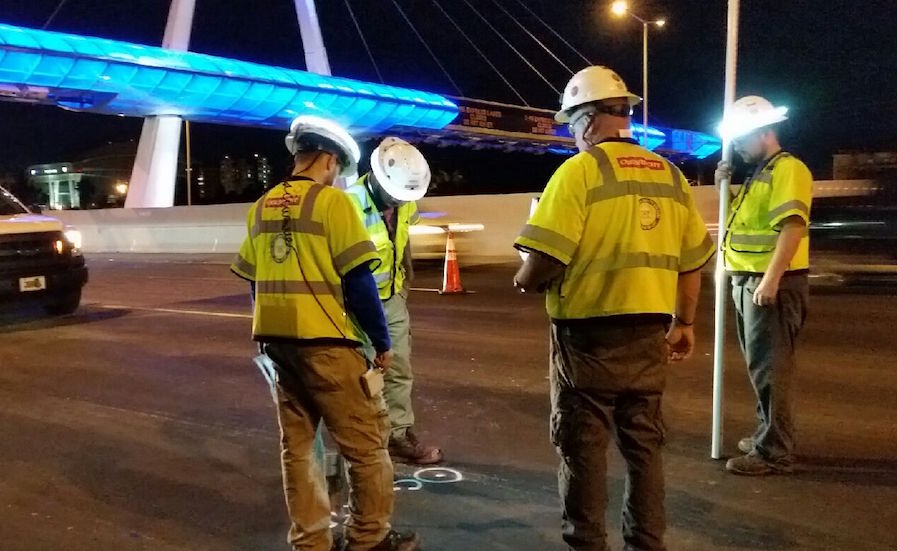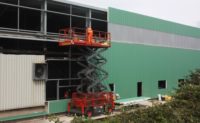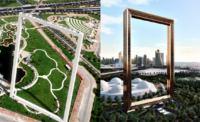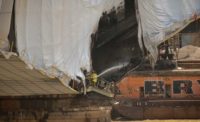You won’t have any problem spotting Odebrecht USA’s highway construction crew at work on SR 836 outside Miami, especially at night. And you’d be forgiven for doing a double take at first at the strange, floating lights in the distance.
That’s because Odebrecht’s construction team working on an interchange project for the Miami-Dade Expressway Authority now wear brightly lit “Halos” – which look quite similar to those worn by angels in religious paintings – atop their hard hats.
Odebrecht’s decision to dole out hard-hat topping Halos, a patented safety light made by Seattle-based Illumagear, on highway construction projects was part of an innovative work zone safety program cited at the recent International Risk Management Institute’s annual conference in Orlando.
Dwayne Jeffery, senior environmental health and safety transportation manager for Odebrecht, said the halos have proven effective in keeping the company’s highway construction crews safe.
The feedback from drivers was instantaneous when the company’s highway construction workers first donned the halos back in 2014 on road project in Texas, he noted.
Drivers immediately slowed down – some so much that they could offer some off-the-cuff feedback.
“Some people actually stopped and asked, ‘what is that? – you can see it a quarter of a mile down the road,’” Jeffery recalls. “They were more aware of that than the flashing yellow light no one pays any attention to in construction.”
The Halos are lightweight, battery-charged rings affixed to a protective hard hat with clips. Its light can be adjusted to suit different tasks and working environments.
Odebrecht has since passed out Halos to more than 40 workers at its Miami area road project, where as many as 200,000 cars and trucks pass by each day.
Odebrecht initially started off doling out a few Halos to members of its maintenance of traffic team, who continually get in and out of their trucks to put out orange cones as they reroute traffic in advance of lane changes and freeway and street closures.
The company then gave out Halos to its flaggers, who direct traffic around construction sites, as well as its work zone spotters. The Halos are now worn by more than 40 construction crew members on the Miami-area interchange project, Jeffery said.
In addition to keeping crew safe from passing cars and trucks, the Halos have also helped spotters stay safe as they direct heavy equipment around the worksite. As many as 20 to 30 trucks and other vehicles are constantly on the move on the interchange project at any one time.
Odebrecht is now considering adding reflective and glow in the dark pants and vests to its safety wear lineup as well, looking in particular at products offered by Lunenberg, Mass.-based Alpha Workwear. The clothing can glow for hours after being charged for a few minutes through exposure to sunlight or artificial light, according to a write-up by Alpha.
Cost is an Issue
The main obstacle now is cost, Jeffery said, with the pants and other items running in the $30 to $40 range apiece. With 400 workers who could use the extra protection, Odebrecht is hoping to find a way to bring the price down.
But in addition to new, high-tech ways of keeping workers safe, Odebrecht also relies on tried and true methods to keep its workers safe, including hiring off-duty police officers to help direct traffic at construction sites. Having on duty officers posted can be even more effective, with the lights on a cruiser certain to get the attention of drivers, he said.
“Obviously, when you see the blue and red lights turned on, people slow down,” he said.
As for work-zone cameras, he said he has not used them, but sees how they can be effective in slowing traffic.
“They definitely work,” Jeffery said. “When you see a camera and an officer out there giving out tickets, it does work – it does bring awareness.”






Post a comment to this article
Report Abusive Comment